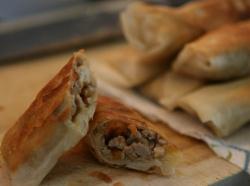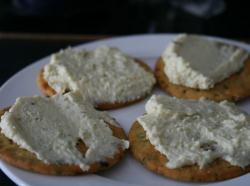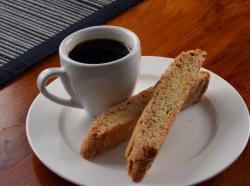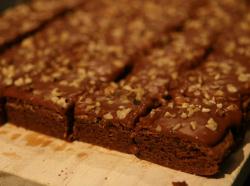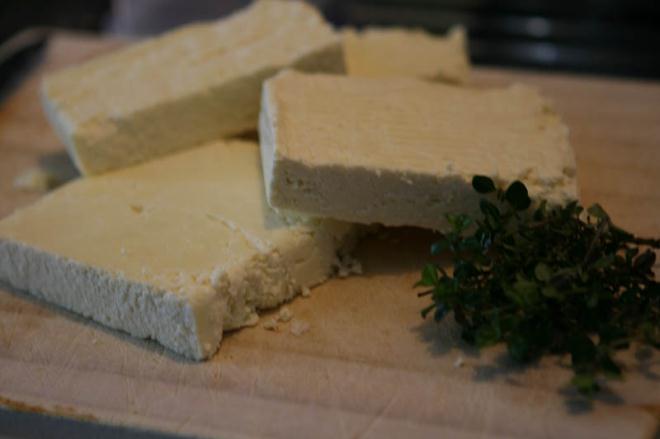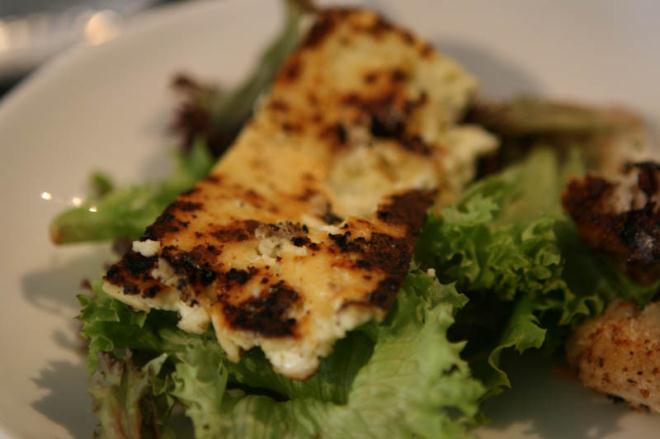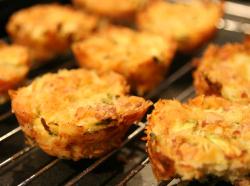
Greek Cypriot Halloumi Cheese
- 4 Litre milk
- 3 Mililitre rennet
- Milk is sieved into the cauldron using a cheesecloth, to remove any impurities or alien objects from the milk.
- The milk is then scalded to 30-34° C and some salt is added.
- Rennet is added to aid the curdling of the milk into coagulated casein.
- The milk is covered and left to curdle for about 45 - 60 minutes.
- Check if the milk has curdled enough by pressing the surface of the milk. It should not stick onto the sides of the cauldron.
- This solid surface is traditionally known as ghialli, which means 'glass'.
- The curds are then cut by hand into small pieces. The cutting of curds is used in all methods of cheese making. This process facilitates the extraction of whey from the curds. The cut curds were known as: dhrosino, vloungos or floungos, depending on the village.
- The cut curd is placed into the woven basket mould and pressed to extract whey. Whey escapes through the holes of the basket. This process is done on the slanting cheese-table, so that the whey drains back into the cauldron.
- Then halloumi/hellim is taken out of the woven basket mould and is cut into 3 or 4 pieces per kilo.
- They are then sprayed with some cold water to help become firm.
- The left over whey is boiled in the cauldron. In some villages lemon is added at this stage.
- Salt is added only when making salted anari/nor.
- Some milk is added to the whey and when the temperature is about 85° C, anari/nor starts to rise to the surface of the cauldron. This is the sign for the cheese-maker to begin stirring anari/nor,so that it does not stick to the bottom of the cauldron. Stirring is done with a specially designed reed stick (kanni).
- Anari/nor is removed from the cauldron and placed in woven-basket moulds or in cheesecloths.
- When ianari/nor has been removed from the cauldron, replace it with pieces of halloumi/hellim and boil them till they rise to the surface. The temperature in the centre of the halloumi/hellim should be 85° C.
- Then the halloumi/hellim is taken out salt mixed with fresh or dried mint is added to it. Then the cheese is folded into its traditional shape.
- Halloumi/hellim is left to cool down and it is then transferred to containers, which are filled with brine (salty whey).
- Fresh halloumi/hellim stays in brine for one day.
- Mature halloumi/hellim is kept in brine for 40 days.
- The bottles or jars where halloumi/hellim is placed for maturing should be clean and sealed.
- If anari/nor is to be salted and dried, it is shaped in specially designed baskets or cut into squares and placed into the sun to dry.
other delicious recipes...

